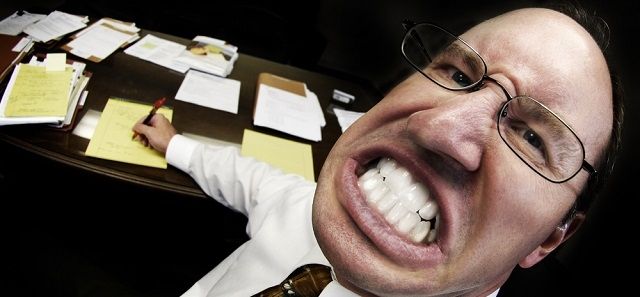Trust and Verify in Project Management
Experts agree that trust is a major factor in performance and relationship health.
Exploring some of the philosophical takes on trust, one can come away with the simplistic idea that trust is good without qualification. For example, trust is a frontal cortex mental process while distrust is related to the reptilian brain. That distinction, together with the idea that one part of the brain is better than another reinforces “trust good; mistrust bad” thinking.
The reality is that we need a proper balance between the reptilian brain’s reflexive protective mechanisms and the frontal cortex’s mindfulness, openness, analysis, and awareness of our interconnectivity to function in the world.
Related Article: Project Management is All About Trust
Looking at it from a practical project management perspective, trust is complex. Trust, like most things, is not just all good. It is a force or energy, and like all forces, it needs to be applied skillfully. Opening to the realities of what happens when one either blindly relies on trust or unconsciously mistrusts, and understanding the factors that lead to greater trust makes us better managers, business analysts, and performers.
Trustee and Trustor Perspectives
There are trustees (the ones being trusted) and trustors (the ones trusting). As a trustee, being trusted is intrinsically good. You can’t go wrong if you cultivate trustworthiness.
However, when you are in the trustor role, it is practical and skillful to base your trust on evidence rather than an idealistic idea that everyone is worthy of being trusted in all circumstances.
For example, if you blindly trust that a stakeholder will perform his or her role in a project, you can find yourself disappointed and your project in jeopardy. There will be unnecessary conflict and long-term repercussions. That is the primary reason for having frequent (but not too frequent) points at which actual deliverables can be assessed as proof that what was promised was delivered.
A client once asked me if I trusted her. My response: “I trust that you will do whatever it is that you think is in your best interest. Let’s come to a mutual understanding of what that is.”
As project managers, we trust and verify. We base our trust on clearly stated agreements, concrete, measurable results, and past performance rather promises and wishful thinking.
What Trust is
Trust is “belief that someone or something is reliable, good, honest, effective, etc.”1 Trust creates confidence in the ability of a person, tool or method to perform and, with people, be candid and honest.
In project management, the PM trusts the good intentions truthfulness of the people working for and with him, the effectiveness of the process, the accuracy of estimates, and his or her own experience and intuition.
The capacity to trust others is strongly influenced by psychological and personality based tendencies – we learn to trust or mistrust starting in early childhood. Some have a tendency to be extremely trusting, others to be extremely distrusting. There is a trust continuum between the extremes. Being mindful of one’s own tendencies and the tendencies of others, the effective PM will set the stage for effective planning and performance monitoring.
A key principle is to be mindful of unconscious tendencies and how they show up in behavior.
Applied Trust
Trust is applied differently depending on the role played in a project. Project performers need to trust the integrity and intention of the PM to treat people fairly, add value, protect them from unreasonable demands and more. Throw one team member under the bus, and you have probably lost the trust of the entire team. Failure to address accountability for errors and omissions will also result in loss of trust. Once lost, trust is hard to regain.
A PM trusts individual performers and functional managers to provide accurate estimates, report problems, and risks at the appropriate time, and do the work. How far this trust goes depends on the specific situation. The best practice of defining tasks with concrete deliverables no longer than a week or so in duration supports not having to rely on trust. We verify that work has been done, objectives are accomplished, quality results have been delivered, and emerging risks, issues, and changes are identified and addressed.
Project and program sponsors and executives – depending on their perceived criticality of the project, their level in the organization and the number of levels between them and the project manager – trust the project process and the project manager to get things done and inform stakeholders when something unexpected happens. Here we might have a month or quarter between formal checkpoints with regular reports coming weekly or monthly or more frequently, perhaps in the form of a dashboard and informal one-on-one meetings.
Trust is broken if the executive is blindsided or surprised by something that he or she could have been informed about earlier. For example, trusting becomes very difficult when at the last minute before expected delivery there is an announcement that there will be a six-month delay and the budget will be twice what was expected. To be trusted, make sure there is transparency and candid reporting.
Distrust leads to a degradation of performance. Time and energy are wasted in protecting oneself from the weaknesses and failings in others. The mistrusting manager will tend to micromanage. Micromanagement requires excessive intrusions into the work process, over control, performers with a sense of being demeaned, excessive time and stress for the PM and for the performers.
Trust with verification in a trusted system frees performers from unnecessary reporting, communicates confidence in them and reduces the stress that comes from both thinking you need to be looking over someone’s shoulder and having someone looking over your shoulder.
The Motivation for Speed and Dedication
“Speed happens when people at work truly trust each other.” Edward Marshal2
Trust engenders motivation. When speed is needed to meet a tight deadline or extra effort is required to take on a challenging change, there is great advantage in having a relationship in which performers and change subjects trust that their leaders are taking care of them rather than treating them as mere cogs in a wheel.
Motivation to go the extra distance, sacrifice for the good of the team or organization is high. When that trust is not present attitudes change and there is a tendency towards anger and frustration, leading to subtle and not so subtle behavior that slows progress.
At the same time, trust by the leadership to give performers the permission to get work done without being micromanaged adds to the ability to go into hyper-speed mode. There is a right balance between giving the team its head and making sure it is heading in the right direction and knows when to stop.
Integrating Trust
Cultivate an attitude that everyone and the universe in general is intrinsically good, supportive, well-meaning and capable of learning. Balance that with the attitude that there are exceptions and a healthy understanding that in projects it is necessary to rely on verifiable performance indicators – particularly deliverables and actions – to ensure that people are doing what is expected of them.
Doing that will motivate effective performance and ensure that the unnecessary fear and anxiety created by uncertainty and the mistrust generated by the reptilian brain are minimized, if not eliminated.
References
1 http://www.merriam-webster.com/dictionary/trust
2 http://www.marshallgroup.com/building-trust-at-the-speed-of-change/




